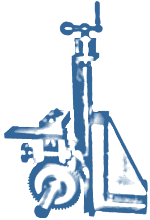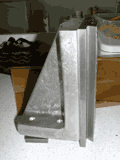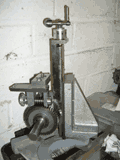|
|
2: Vertical slide Last updated: 30 Nov 2016 |
|
The vertical slide holds the work head in one of three
positions to cater for various sized gears. In the topmost position the work head can be rotated to permit
machining of bevel gears. Dovetail slides are utilised along with a gib strip to locate the moving slide in
the vertical axis.
Jacobs used a piece of 4 1/2" x 2 1/2" angle to make the bracket for the slide, as I don't have any of this stuff an alloy casting will be made instead. As a modification to the original drawings, a locking mechanism will be added to the gib strip to keep things a little more rigid. |

|
These pages are maintained by Duncan
Munro. All content on this site is Copyright ©2002-2025 Duncan
Amplification.
Warning: These pages consist of images and descriptions of equipment
which can reach high temperatures creating hazardous and potentially dangerous
situations. These pages should not be taken as a step by step guide on how
to construct any items or carry out any particular procedure, nor should any
references to safety contained herein be taken to guarantee safety in all
situations.









